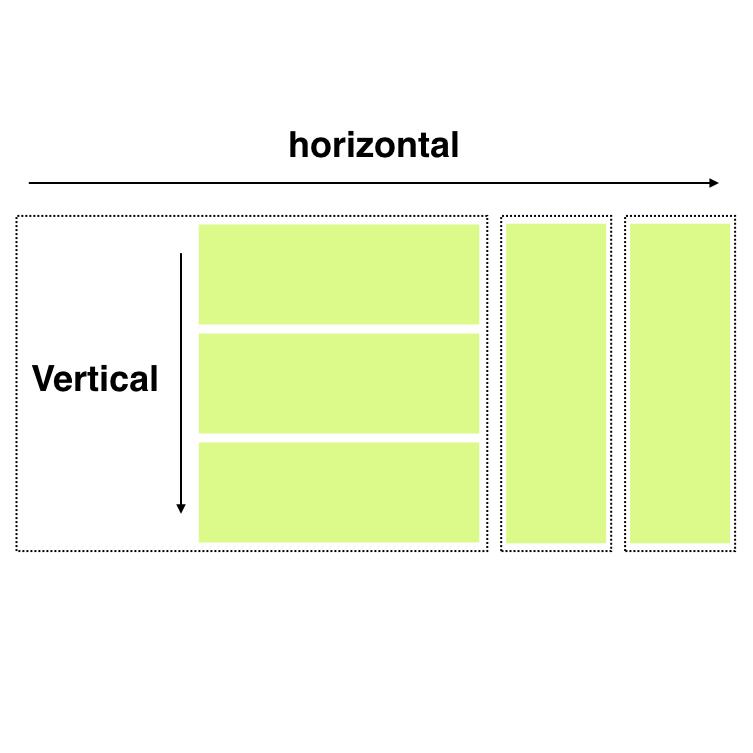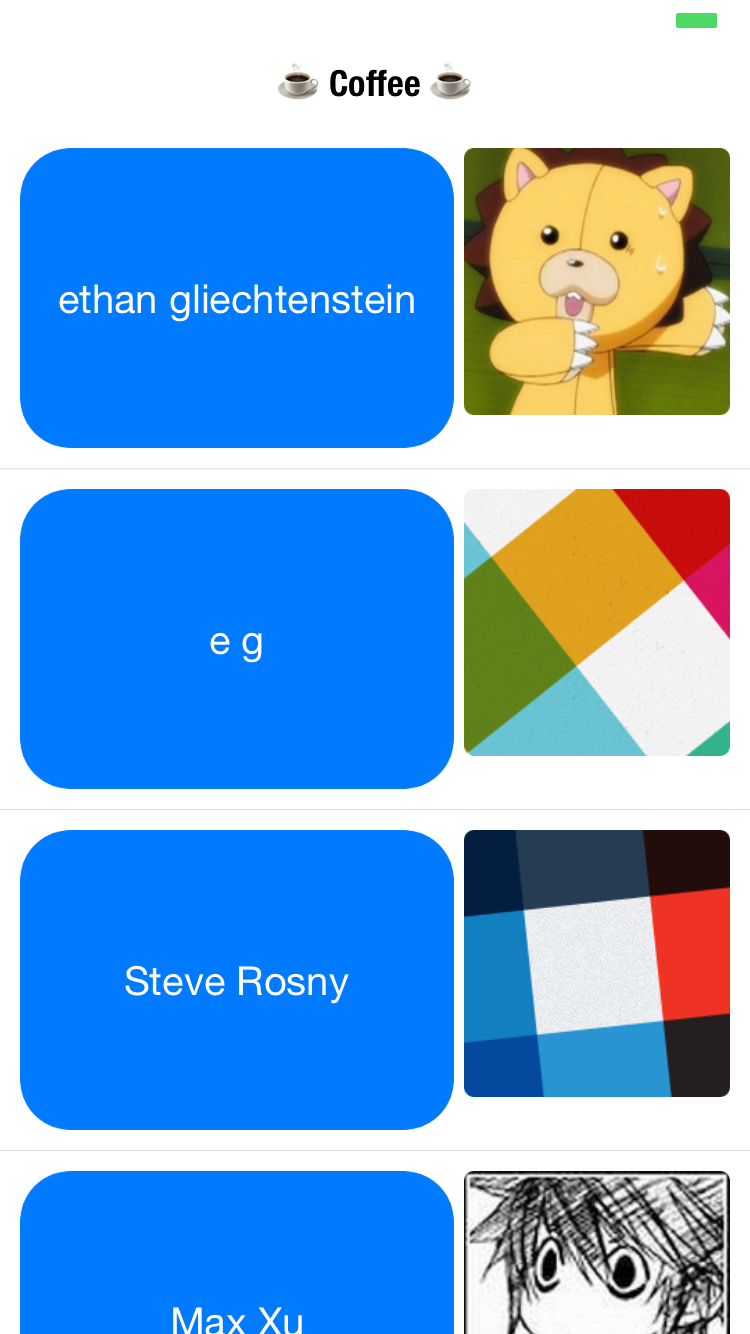By Ethan
For the past few months, I’ve been working on a new way to build cross-platform, native iOS and Android apps called Jasonette.
It lets you describe an entire app with nothing but a single JSON markup.
If your app consists entirely of JSON, it can be treated like any other data. And it can be served remotely from the cloud on-demand.
The app logic no longer needs to be hardcoded on the device, and you can update it as much as you want just by updating your JSON on the server-side. Your app will be freshly loaded from the server every time you open it.
Check out the video below for a quick intro:
Jasonette has many different parts. You can express functions, templates, styles, and more all by using a JSON Markup. And as a result, you can write a super-sophisticated native mobile app in a fully Model — View — Controller manner.
In this post I’ll show you specifically the “View” part:
- How Jasonette expresses various cross-platform UI patterns in JSON.
- How it implements these JSON-to-Native mappings internally.
Basic Structure
Under the hood, Jasonette works similarly to a web browser. But instead of interpreting an HTML markup and drawing a web view, Jasonette fetches a JSON markup and constructs a native view, on-the-fly.
The markup is just a JSON file that follows some predefined conventions. First of all, it starts with a$jason key, which has two children: head and body, and looks like this:
{ "$jason": { "head": { .. metadata about the document ... }, "body": { .. actual content to be displayed on the view .. } }}
Design Philosophy
When I first started designing the JSON syntax for describing native views, I had a couple of constraints in mind:
- Native — There’s a reason why iOS and Android came up with their own native layout systems. The layout systems designed for the desktop era don’t always translate well to the small device world. The syntax should express the underlying layout in as mobile native manner as possible.
- Cross platform — Yet it needs to be cross platform. For example, iOS has something called autolayout and visual format language but these are not implemented natively on Android, so not the right solution.
- Simple yet expressive — It should be easily expressed in a simple JSON format and easy to compose into a sophisticated structure.
When you take a look at how most mobile apps are built, they all boil down to a small number of common interface patterns:
- Vertically scrolling list
- Horizontally scrolling list
- Absolute positioning
- Grid
Let’s take a look at the first three, since they are most widely used.
1. Sections — Describing scrolling lists
The most frequently used UI pattern is scrolling lists. On Jasonette we call them sections.
There are two types of sections: Vertical and Horizontal. Vertical sections scroll vertically, and horizontal sections horizontally.

 A single vertical section with multiple items (Left) — Multiple horizontal sections (Right)
A single vertical section with multiple items (Left) — Multiple horizontal sections (Right)
Implementation — Vertical Sections
This is probably the most frequently used UI for displaying data on mobile devices. On iOS, Jasonette implements this with UITableView. On Android it’s implemented with RecyclerView.
{ "body": { "sections": [{ "items": [ {"type": "label", "text": "Item 1"}, {"type": "label", "text": "Item 2"}, {"type": "label", "text": "Item 3"} ] }] }}
On iOS, above JSON markup creates a UITableView with three UITableViewCells, each of which contains a UILabel, with corresponding text attributes.
On Android, it creates a RecyclerView with three items, each of which is a TextView that displays the corresponding text attributes.
All of these are constructed programmatically without any use of Storyboards (iOS) or XML layout files (Android) in order to make sure every detail is programmable dynamically.
Implementation — Horizontal Sections
Syntax-wise, horizontal sections are not much different, all you need to do is set the type as “horizontal”, and the items flow horizontally.
{ "body": { "sections": [{ "type": "horizontal", "items": [ {"type": "label", "text": "Item 1"}, {"type": "label", "text": "Item 2"}, {"type": "label", "text": "Item 3"} ] }] }}
- Note: The syntax for the horizontal section is simple, but internally it’s actually quite complex. Horizontal sections on iOS were implemented with UICollectionView. It’s a well-known technique, but basically a horizontally scrolling UICollectionView is embedded into its parent UITableView (which scrolls vertically). And on Android, it’s implemented in a similar manner, but using nested RecyclerViews instead.
2. Items — Describing layout within each scrolling unit
Now that we understand how the top level view is structured, let’s look at items. Each section is made up of multiple units of scrollable items. Note that each item has a fixed dimension and nothing inside the item itself scrolls.
An item can be:
- Just a single component like a
label,image,button,textarea, etc. - A combination of all of those components
Implementing this part was not as straight-forward as the sections implementation, because I had to choose a cross-platform, native, simple, and expressive way to form a super-sophisticated layout.
Thankfully, iOS and Android have very similar native layout systems called UIStackView and LinearLayout, respectively. And these layout schemes in turn are similar to CSS Flexbox, so I would say it’s as cross-platform as it can get.
Lastly, these layout systems are infinitely composable. As seen below, you can create a vertical layout, a horizontal layout, or nest a vertical layout within a horizontal layout, and so forth, recursively.



To create a vertical layout, you would set the type as vertical, and then set its components:
{ "items": [{ "type": "vertical", "components": [ { "type": "label", "text": "First" }, { "type": "label", "text": "Second" }, { "type": "label", "text": "Third" } ] }]}
Same thing with horizontal layout. Just set the type as horizontal instead:
{ "items": [{ "type": "horizontal", "components": [ { "type": "image", "url": "http://i.giphy.com/LXONhtCmN32YU.gif" }, { "type": "label", "text": "Rick" } ] }]}
Nesting layouts is as simple as specifying a layout as another layout’s component.
{ "items": [{ "type": "horizontal", "components": [ { "type": "image", "url": "http://i.giphy.com/LXONhtCmN32YU.gif" }, { "type": "vertical", "components": [{ "type": "label", "text": "User" }, { "type": "label", "text": "Rick" }] } ] }]}
I have not talked about the styling feature here for the sake of brevity, but you can style each individual component as well as the layout itself to make sure the layout looks exactly like you wanted. All you need to do is add style objects describing font, size, width, height, color, background, corner_radius, opacity, etc.
3. Layers — AKA “absolute positioning”
Sometimes you may want to position items at exactly certain parts of the screen without scrolling. In CSS-terms we would call this “absolute positioning”. Jasonette supports this through what’s called layers.
Currently layer supports two types of child components: image and label. You can place these components anywhere you desire on the screen this way. Here’s an example:
 A Jasonette app with layer items
A Jasonette app with layer items
In this example, we have two labels (the temperature and the weather messages) and an image (the camera icon) on the screen, whose coordinates have been explicitly set to make sure they stay in place without scrolling. The markup would look something like this:
{ "$jason": { "body": { "style": { "background": "camera" }, "layers": [ { "type": "label", "text": "22°C", "style": { "font": "HelveticaNeue-Light", "size": "20", "top": "50", "left": "50%-100", "width": "200", "align": "center" } }, { "type": "label", "text": "few clouds", "style": { "font": "HelveticaNeue", "size": "15" } }, { "type": "image", "url": "https://s3.amazonaws.com/.../camera%402x.png", "style": { "bottom": "100", "width": "30", "color": "#ffffff", "right": "30" } } ] } }}
Amazingly enough, this is all you need to know in order to build any kind of sophisticated view you can imagine on mobile devices.
Just like you can build anything with simple lego blocks, you can compose these basic components and layouts in different ways to create any sophisticated view.
Here are some examples, 100% built by composing aforementioned UI elements:


Beyond Views
If you read this far, you may be either thinking:
- “Wow cool! I wanna try this!”, or
- “Yeah you can probably build a toy app, but no way you can build a production app using this way!”
Like I briefly mentioned above, this is just the “View” part of Jasonette, which is the simplest part. But what’s really powerful about Jasonette is that you can actually go much further and write a full declarative program in JSON.
You can attach actions to UI elements, which get triggered when a user touches them. You can also trigger these actions one after another via success/error callbacks. You can also listen to certain events and automatically trigger these actions.
Just like this, when you can describe not just a “View” but also the “Model” and the “Controller” logic (all in JSON), you can do anything.
What is possible?
Since all you need is a server that sends JSON, Jasonette is completely platform agnostic. There is no proprietary server technology you need to depend on. All you need is JSON.
And JSON can come from anywhere, from local device, to remote servers, to even a raspberry pi!
- Have a web app? : If you already have a web app, you can instantly build a mobile native app for your Node.js app, Rails app, Django app, PHP app, or really any web app, just by making requests to your API endpoint.
- You don’t even need a server : Since you can fit an entire model-view-controller in a single, self-contained JSON file, you can pretty much store and serve it from anywhere. You can even create an app from a static JSON file served from a Pastebin or Github!
- Turn any HTML website into an app : Jasonette has a powerful HTML-to-JSON parser powered by the cheerio library which lets you transform any HTML into a JSON object. And you already know what we can do when we have JSON — you can build a native view from the transformed JSON! This way, you can build a native app from a website that doesn’t even have an API. Of course, the recommended way is to use JSON whenever you can, but this is really cool regardless.
I can go on forever, but here are some examples:
A photo sharing app that lets you take a photo using the device camera and upload it to S3, and then post the entry to your own server, creating a feed:
Jasonette/s3-upload-example
_s3-upload-example - A Jasonette app for uploading image to S3 using $network.upload_github.com

A Node.js powered Eliza Chatbot app for iOS and Android:
Jasonette/eliza-example
_eliza-example - Eliza app on the iPhone_github.com

A Microblog app, complete with session management:
Jasonette/token-authentication-example
_token-authentication-example - A Jasonette microblog app, built with rails (server side), using devise to implement…_github.com


A remote control app for Slack bots:
Remote-control your Slack bots with JSON
_A couple of days ago, @shaunymca shared a really cool project on our slack channel. If you think about it, this is a…_blog.jasonette.com


An example app that turns an HTML web page into JSON and then turns it into a native app:
gliechtenstein/iosdevweekly.json
_iosdevweekly.json - Native app for iOS Dev Weekly, wrrten in pure JSON._github.com

Conclusion
Jasonette is a young project. I open-sourced the iOS version in late 2016, and the Android version a month later.
But it has already grown into a vibrant community of contributors and makers and is under active development. I hope this technology will empower anyone (not just developers) to build apps effortlessly.
Sounds good? Check out the website here.
Last but not least, you can find the Github repositories here: iOS and Android (Contributions super-welcome!)
